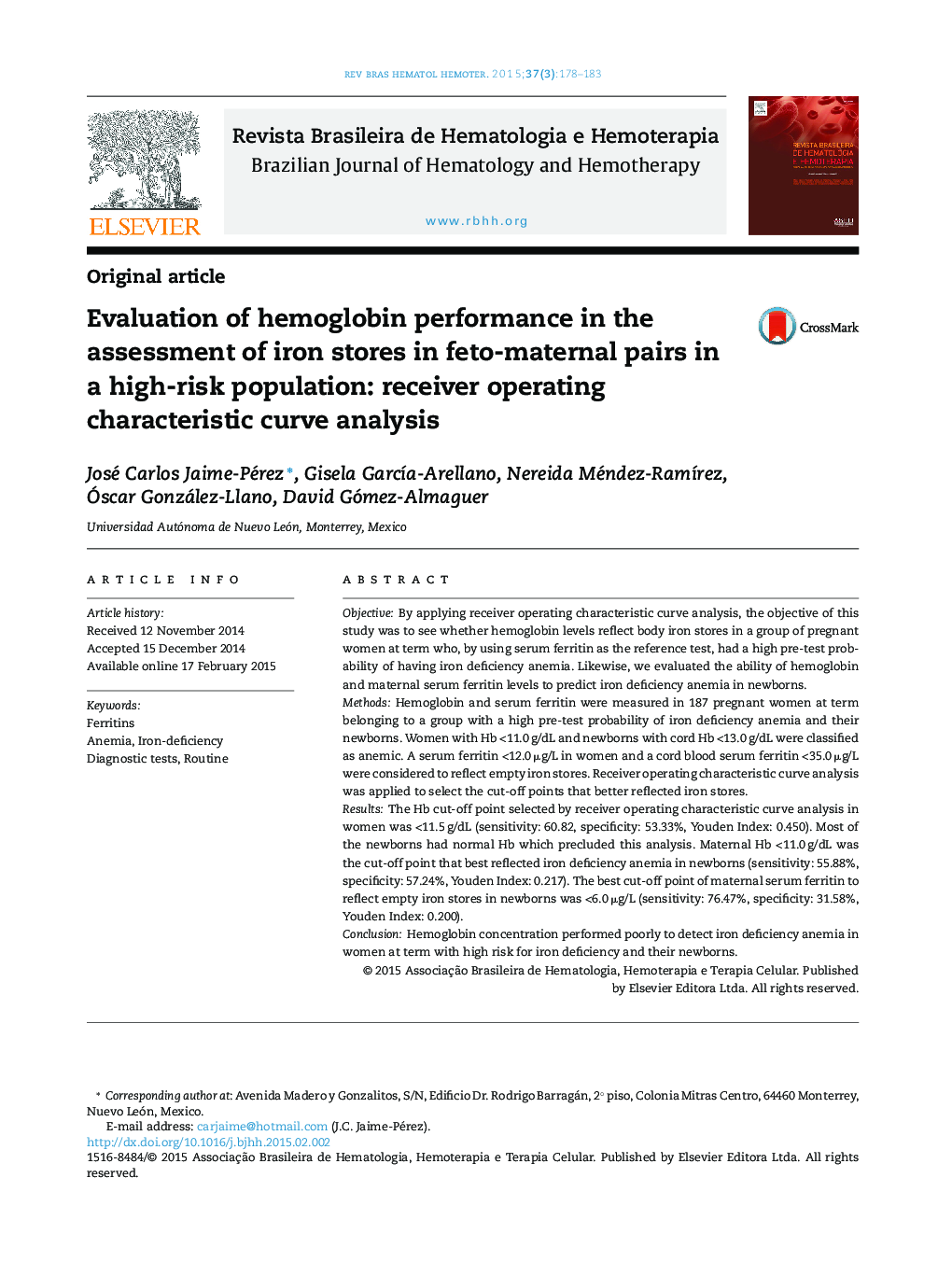| Article ID | Journal | Published Year | Pages | File Type |
|---|---|---|---|---|
| 3333064 | Revista Brasileira de Hematologia e Hemoterapia | 2015 | 6 Pages |
ObjectiveBy applying receiver operating characteristic curve analysis, the objective of this study was to see whether hemoglobin levels reflect body iron stores in a group of pregnant women at term who, by using serum ferritin as the reference test, had a high pre-test probability of having iron deficiency anemia. Likewise, we evaluated the ability of hemoglobin and maternal serum ferritin levels to predict iron deficiency anemia in newborns.MethodsHemoglobin and serum ferritin were measured in 187 pregnant women at term belonging to a group with a high pre-test probability of iron deficiency anemia and their newborns. Women with Hb <11.0 g/dL and newborns with cord Hb <13.0 g/dL were classified as anemic. A serum ferritin <12.0 μg/L in women and a cord blood serum ferritin <35.0 μg/L were considered to reflect empty iron stores. Receiver operating characteristic curve analysis was applied to select the cut-off points that better reflected iron stores.ResultsThe Hb cut-off point selected by receiver operating characteristic curve analysis in women was <11.5 g/dL (sensitivity: 60.82, specificity: 53.33%, Youden Index: 0.450). Most of the newborns had normal Hb which precluded this analysis. Maternal Hb <11.0 g/dL was the cut-off point that best reflected iron deficiency anemia in newborns (sensitivity: 55.88%, specificity: 57.24%, Youden Index: 0.217). The best cut-off point of maternal serum ferritin to reflect empty iron stores in newborns was <6.0 μg/L (sensitivity: 76.47%, specificity: 31.58%, Youden Index: 0.200).ConclusionHemoglobin concentration performed poorly to detect iron deficiency anemia in women at term with high risk for iron deficiency and their newborns.
